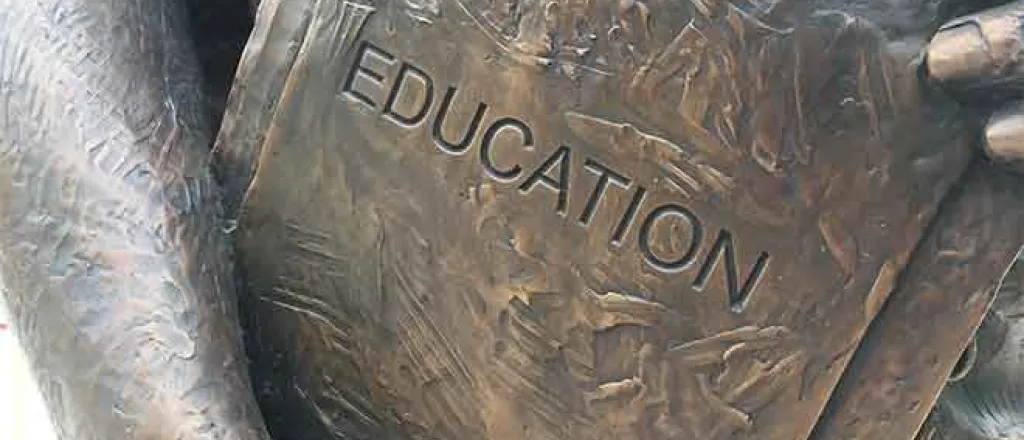
Kansas’ smallest school district prepares to close in warning sign for rural communities
(Kansas Reflector) Eighth-grade graduates walked the stage May 16 as family members cheered them on, filling rows in the front of the Healy public school district’s auditorium.
School board members were seated at the side of the stage to congratulate the students — all three of them. Celebratory cake and punch waited outside.

© iStock - nirat
The three on stage that day were enjoying what will likely be one of Healy’s final graduation ceremonies. Healy is the state’s smallest school district and it is living on borrowed time.
Healy is an extreme example — one that caught lawmakers’ attention at the end of the legislation session — but it foreshadows the challenges that rural districts and state officials will have to confront in the near future as student populations dwindle.
Eight other K-12 Kansas public school districts have fewer than 100 students. Another 28 districts have fewer than 200 students. The state has no blueprint for dealing with the declining student enrollment.
Healy Unified School District 468, located in an unincorporated rural community in Lane County, has never been a large district. Between the 2021-2022 school year and the 2022-2023 school year, the district’s enrollment declined from 40 to 38 students. But in the 2023-2024 school year, the district was down to 21 students.
With the numbers falling, Healy high schoolers were sent to the Western Plains High School 38 miles away in Ransom for two days a week, said Jeff Jones, who serves as superintendent for both districts.
The district considered contracting K-12 students out to neighboring districts for the upcoming school year while retaining state funding for its students — but that move was blocked by the Legislature in the final hours of the session.
The state’s school finance formula allows districts with declining populations to use a two-year window to calculate student enrollment. Lawmakers adopted Senate Bill 339 to prohibit the use of state base aid from being allocated to a school district with no students attending school in the district in the upcoming school year. Students who are residents of the district but enrolled elsewhere will have to be counted in the other school district, and state funding will follow them.
Jones said the district had already reconsidered its options by the time the Legislature passed the law.
“We kind of already switched gears that we’re going to have to offer something,” Jones said.
The district now will offer fifth- through eighth-grade classes to an estimated 19 students while developing a plan to dissolve and consolidate. Jones said the district would have taken action earlier but could not meet Kansas State Board of Education deadlines for school consolidation.
“It’s just incredibly difficult,” he said.
Ready to move on
The school in Healy can be found by taking a quick turn off Kansas Highway 4 and following the dusty road about half a mile past the Sinclair gas station. Behind the school, fields stretch into the distance. The playground is empty, and the playing field opposite is deserted.
For the upcoming school year, two of the district’s formerly seven teachers will remain.
Ryan Young, one of the two teachers who will stay next year, cut graduation cake outside the auditorium. Healy students had also made mints and punch for the tiny graduating class.
“It’ll be a new adventure, as every school year is,” Young said. “Each year is going to present its own challenges, so roll with it. Go with it.”
Dana Shay, who will not return to work for the district full-time for the first time in almost 30 years, said she was experiencing a myriad of emotions. Born and raised in Healy, she returned after college to marry a Healy farmer and settled in the community. Shay served the district in many capacities, including athletic director, teacher, coach and test coordinator.
She described her feelings: “Exhilaration, sadness and maybe acceptance that things are changing.”
“We used to have so much loyalty for community schools,” Shay said. “But that’s something of yesterday, and people go whenever they think suits their student and that’s the way it is. People want that freedom to go where they want to go, and you just have to accept that.”
She showed the painted line of names that stretches all around the school, documenting students from 1916 to the present. She pointed to her father’s name, her own name, her husband’s name and the names of her two children, documented in different portions of the school.
“You can’t stop time,” Shay said. “And I’m very grateful for the experience that I’ve had, all the funny stories.”
Her son, Camron Shay, a member of the school district’s board of education, said the community had already accepted the district’s closing.
“We’re all ready to move on,” he said. “I think we’ve had the feelings of sadness for like the last 10 years, when we’ve been slowly getting to the point where we can’t really be a legitimate size. I think all those notions of sadness are kind of far gone. It’s just kind of like, ‘Let’s close it.’ ”
A bigger problem
While Healy plans to dissolve next year, Senator Molly Baumgardner, a Louisburg Republican tasked with shaping school finance policy, said the Kansas State Department of Education would need to be more involved in helping other rural districts.
“The Department of Education is going to need to be more than just collecting data and collecting reports from school districts,” Baumgardner said. “It’s going to really need to be a more interactive agency that is really providing those leadership services and helping communities come up with solutions that are still supportive of the community.”
Baumgardner said the purpose of SB 339 was to safeguard student aid. She said she wants more general conversation about enrollment trends.
“We have to acknowledge what is happening with enrollment trends,” Baumgardner said. “When you look at the reality of our smaller districts, oftentimes they are newer administrators. … They need folks coming in and helping them really look at their financial situation, look at what the recent population trends are for enrollment, and then start looking at neighboring school districts to help them come up with multiple options for the community to decide.”
Frank Harwood, who started in January as KSDE deputy commissioner of fiscal and administrative services, said he will examine the problem in the coming months.
Harwood said Kansas has dealt with declining rural populations since the early 1900s, as people moved away from the country and into more urban areas. He said the rural district situation is complex, with population, geographic location and remote learning options all potential factors.
“There’s not going to be a one-size-fits-all solution,” Harwood said. “But I think what we need to do is start looking at some points in a district’s path. … The school or the school district is kind of the connection between the rest of the community, so there’s certainly that really important kind of emotional connection to schools.”
In Healy, trophies and pictures of previous generations of students line the walls outside the auditorium. A chalked hopscotch court was still outlined on the day of the eighth-grade graduation.
“One thing to be very proud of, it offered a different type of school system than a lot of other schools,” Jones said. “You did have very small class sizes, and we were able to be successful with some students that really struggled in neighboring school districts. Whether they would contend with bullying or academic concerns, students that were marginalized in those districts really found some success at Healy. There was definitely a place for the district.”
Kansas Reflector is part of States Newsroom, a nonprofit news network supported by grants and a coalition of donors as a 501c(3) public charity. Kansas Reflector maintains editorial independence. Contact Editor Sherman Smith for questions: info@kansasreflector.com. Follow Kansas Reflector on Facebook and Twitter.














